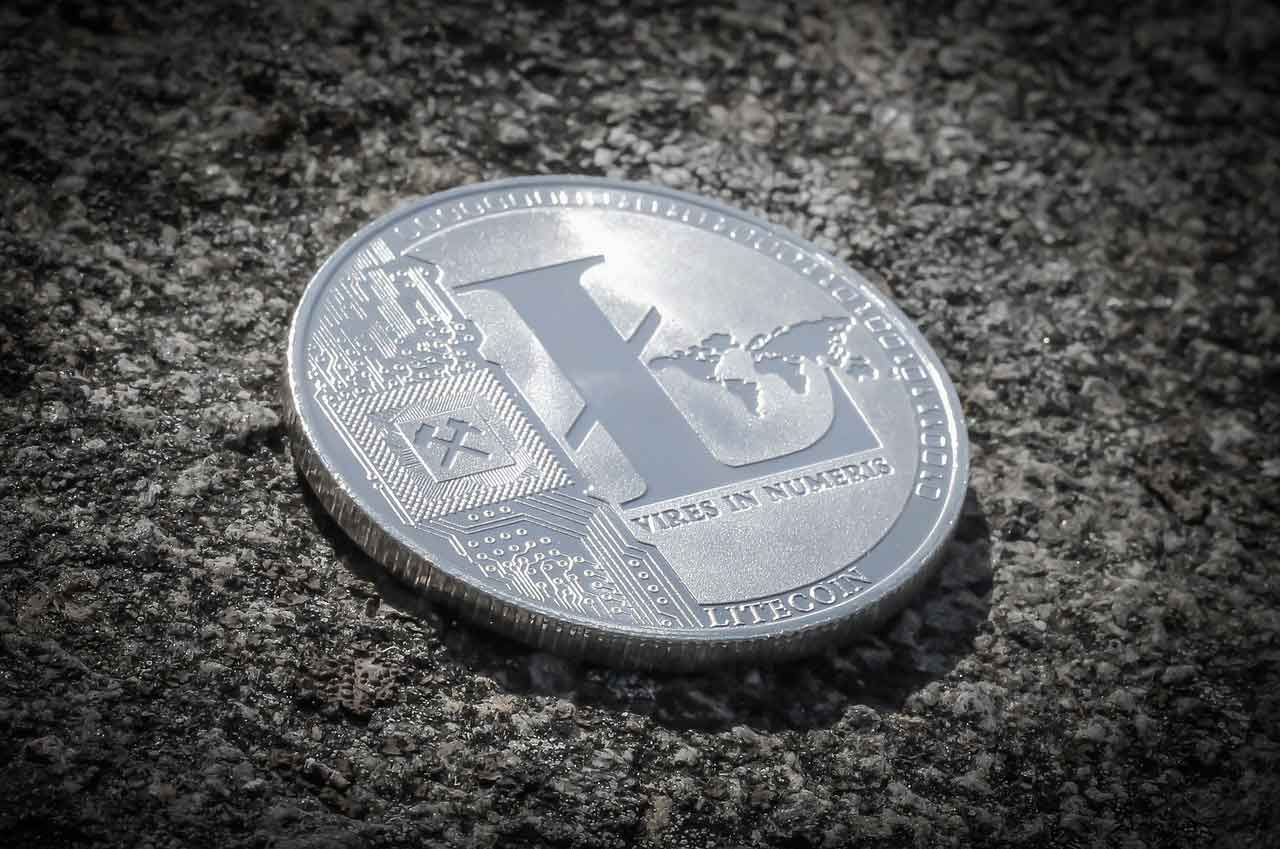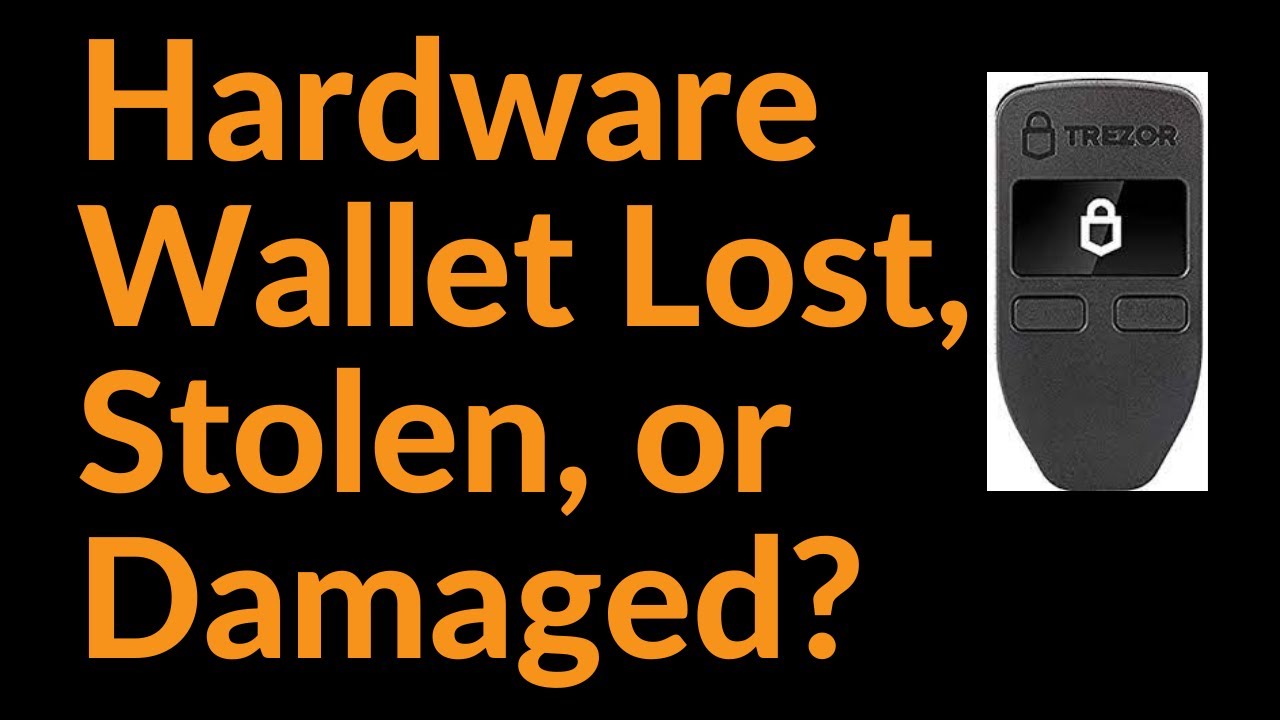Introduction
Welcome to the world of cryptocurrency, where digital assets are revolutionizing the way we transact and store value. As more individuals and businesses embrace the benefits of cryptocurrencies like Bitcoin, Ethereum, and Ripple, it’s essential to understand the importance of safeguarding your investments. However, despite taking all necessary precautions, there may be instances where you find yourself in the unfortunate situation of losing access to your cryptocurrency holdings.
Whether you accidentally deleted your wallet, lost your private key, fell victim to a scam, or experienced a security breach, the thought of losing your hard-earned crypto can be distressing. But don’t panic just yet. In this guide, we’ll explore various methods and best practices to help you recover your lost cryptocurrency.
When it comes to cryptocurrency, there is no central authority or financial institution to turn to for assistance. You are your own bank. This decentralization, while offering many benefits, also means that you bear the responsibility of safeguarding your digital assets. This is why it’s crucial to have a thorough understanding of backup and security measures, as well as the recovery methods available to you in the event of loss.
Throughout this article, we’ll delve into the different types of cryptocurrency losses you may encounter, such as accidentally deleting your wallet, losing your private key, falling for scams, or even experiencing a hack. For each type of loss, we’ll outline specific recovery methods and precautions you can take to increase the chances of successfully retrieving your funds.
It’s important to note that while the methods outlined in this guide have been proven effective for many individuals, there is no guarantee of success in every situation. The cryptocurrency landscape is constantly evolving, and each case may have unique circumstances. However, by following the steps and guidelines shared in this article, you will be better equipped to navigate the recovery process and increase your chances of reclaiming your lost cryptocurrency.
Now that we understand the significance of recovering lost cryptocurrency and the potential challenges involved, let’s dive into the various strategies and techniques that can help you overcome these obstacles.
Importance of Recovering Cryptocurrency
Recovering lost cryptocurrency is not only essential for your financial well-being but also for the sustainability and adoption of cryptocurrencies as a whole. Here are some reasons why:
- Financial Security: Cryptocurrencies have gained popularity due to their potential for significant returns on investment. Losing access to your crypto holdings can mean losing a substantial amount of money. Therefore, it is crucial to make every effort to recover your funds and protect your financial security.
- Preservation of Wealth: Cryptocurrencies have long been considered a digital store of value. By recovering your lost crypto, you can preserve your wealth and ensure that your investment remains intact.
- Learning Opportunity: The process of recovering lost cryptocurrency can be a valuable learning experience. It forces you to gain a deeper understanding of wallet backups, security measures, and recovery techniques. This knowledge will make you a more informed and cautious investor in the future.
- Supporting Cryptocurrency Adoption: The ability to recover lost cryptocurrency helps instill confidence in the broader community. When users know that there are viable methods for retrieving lost funds, they may be more willing to embrace cryptocurrencies and invest in them, thereby fostering adoption and growth of the ecosystem.
- Ethical Considerations: In some cases, lost or stolen cryptocurrency may end up in the hands of malicious actors who can use it for illicit activities. By recovering your funds, you prevent these individuals from profiting from your losses and contribute to a safer digital environment.
While the importance of recovering lost cryptocurrency cannot be overstated, it is crucial to approach the recovery process with caution and diligence. As we explore different recovery methods in the following sections, keep in mind that each case is unique, and success cannot be guaranteed. However, by following the recommended practices and seeking professional assistance when necessary, you can maximize your chances of reclaiming your lost crypto.
Now that we understand why recovering lost cryptocurrency is crucial, let’s delve into the important steps you can take to safeguard your investments and increase your chances of successful recovery.
Backup and Security Measures
One of the best ways to avoid the need for recovering lost cryptocurrency is to implement proper backup and security measures. Taking proactive steps to protect your digital assets can save you from potential losses. Here are some essential backup and security measures to consider:
- Wallet Backups: Regularly create backups of your cryptocurrency wallets. This involves saving a copy of your wallet’s private key or seed phrase in a secure location that is separate from your computer or device. In the event of accidental deletion or loss of your wallet, having a backup allows you to restore your wallet and regain access to your funds.
- Secure Storage: Ensure that your backup files, such as wallet.dat, are securely stored. Consider using physical storage devices such as external hard drives or encrypted USB drives. Alternatively, you can use reputable cloud storage services with strong security measures in place. It’s important to avoid storing backups on easily accessible devices or public cloud services that may be susceptible to hacking or unauthorized access.
- Strong Passwords: Use strong and unique passwords for your cryptocurrency wallets and any associated accounts. Avoid using easily guessable passwords and always opt for complex combinations of uppercase and lowercase letters, numbers, and special characters. Regularly update your passwords and never share them with anyone.
- Two-Factor Authentication (2FA): Enable two-factor authentication for all your cryptocurrency accounts and wallets that support this additional layer of security. 2FA usually requires a second verification code, either generated by an app like Google Authenticator or received through SMS. This extra step adds a crucial barrier against unauthorized access.
- Hardware Wallets: Consider using hardware wallets like Ledger or Trezor for enhanced security. These physical devices store your private keys offline, keeping them protected from online threats. Hardware wallets typically require a physical confirmation for transactions, providing an additional layer of security.
- Regular Updates and Security Patches: It’s essential to keep your operating system, wallets, and any associated software up to date. Regularly install the latest updates and security patches provided by the developers. This ensures that your devices and software have the latest security features and fixes any potential vulnerabilities that may be exploited by hackers.
By implementing these backup and security measures, you significantly reduce the risk of losing access to your cryptocurrency. However, even with these precautions in place, unforeseen circumstances can still arise, leading to the need for recovery methods. In the next sections, we will explore different types of cryptocurrency losses and the corresponding recovery strategies to help you regain control of your funds.
Identifying the Type of Loss
When it comes to recovering lost cryptocurrency, it is crucial to identify the specific type of loss you have experienced. This identification will help determine the appropriate recovery method to pursue. Here are some common types of cryptocurrency losses:
- Accidental Deletion: If you have accidentally deleted your cryptocurrency wallet or its associated files, it is considered an accidental deletion loss. This could happen due to human error, formatting a device without a proper backup, or uninstalling a wallet application without saving the necessary data.
- Lost Private Key: A lost private key is another common type of loss. Your private key is the unique string of characters that enables access to your cryptocurrency funds. Losing your private key can make it impossible to access and transact with your crypto holdings.
- Hardware Wallet Failure: Hardware wallets can fail due to various reasons, such as physical damage, device malfunction, or loss of the device itself. If you are unable to access your cryptocurrency funds stored in a hardware wallet, it is considered a hardware wallet failure loss.
- Scams or Hacks: Unfortunately, the cryptocurrency space is not immune to scams and hacks. If you have fallen victim to fraudulent activities or your crypto assets have been stolen through hacking, it is important to take immediate action to recover your funds.
Identifying the type of loss will guide you in selecting the appropriate recovery method. Accidental deletion and lost private key losses may require wallet recovery techniques. Hardware wallet failures may involve specialized recovery procedures provided by the device manufacturer. Scams or hacks may require reporting the incident to the authorities and working with experts in the field.
While identifying the type of loss is crucial, it is equally important to assess the severity of the loss. Determine the amount of cryptocurrency involved and evaluate the potential impact on your financial situation. This information will help prioritize your recovery efforts and the resources you allocate to the process.
Keep in mind that not all losses can be recovered. Some circumstances, such as irreversible transactions and unrecoverable private keys, may render certain funds permanently lost. However, by correctly identifying the type of loss and acting promptly, you can maximize your chances of successful recovery.
In the next sections, we will explore specific recovery methods for each type of loss, providing you with actionable steps to reclaim your lost cryptocurrency.
Common Reasons for Crypto Loss
There are several common reasons why individuals experience cryptocurrency loss. It’s important to be aware of these factors to mitigate the risk and take preventive measures. Here are some frequent causes of crypto loss:
- Inadequate Backup: One of the primary reasons for crypto loss is the lack of proper backup procedures. If you don’t have a backup of your wallet’s private key or seed phrase, you may permanently lose access to your funds in case of accidental deletion or device failure.
- Forgetting or Misplacing Private Keys: As private keys are crucial for accessing and managing cryptocurrency funds, forgetting or misplacing them can lead to complete loss of access. Without the private key, you won’t be able to restore or transact with your crypto holdings.
- Phishing and Scams: Falling victim to phishing attacks or cryptocurrency scams can result in the unauthorized transfer of your funds. Hackers and fraudsters often use deceptive tactics to trick individuals into revealing their private keys or sending them cryptocurrency, leading to substantial financial loss.
- Weak Security Measures: Using weak passwords or failing to implement proper security practices can make your cryptocurrency vulnerable to hacking or unauthorized access. Without robust security measures in place, hackers can potentially gain control over your crypto assets.
- Hardware Wallet Failures: Although hardware wallets are considered one of the most secure methods of storing cryptocurrencies, they can still fail. Physical damage to the device, loss or theft of the device, or technical malfunctions can result in the loss of access to your funds stored in the hardware wallet.
- Lost or Inaccessible Devices: Losing the device on which your cryptocurrency wallet is installed, or encountering difficulties in accessing the wallet due to device malfunction or malware, can lead to funds becoming inaccessible.
It’s important to understand that cryptocurrency transactions are irreversible by design. Once a transfer is made, there is no central authority that can reverse or cancel the transaction. This aspect of cryptocurrencies emphasizes the need for caution and diligence to prevent loss and secure your funds.
By being aware of the common reasons for crypto loss, you can take proactive steps to protect your digital assets. Implementing strong backup procedures, maintaining strict security measures, and remaining vigilant against potential scams and phishing attempts can significantly reduce the risk of losing your valuable cryptocurrency holdings.
In the following sections, we will explore various methods to recover your lost cryptocurrency based on the specific type of loss you have encountered, providing you with the knowledge and tools necessary to navigate the recovery process effectively.
Recovery Methods for Lost Crypto
Recovering lost cryptocurrency can be a complex and challenging process, but there are various methods you can employ depending on the type of loss you have experienced. Here are some common recovery methods for lost crypto:
- Wallet Recovery: If you have accidentally deleted your cryptocurrency wallet or its associated files, there may still be a chance to recover it. The first step is to search for any existing backup files you may have created. If you have a backup of your wallet’s private key or seed phrase, you can import it into a new wallet and regain access to your funds. If you don’t have a backup, there are specialized software tools and services available that can attempt to recover deleted data from your storage devices.
- Private Key Recovery: Losing your private key can be a significant obstacle when it comes to accessing your cryptocurrency funds. However, depending on the wallet or service you’re using, there might be options for key recovery or account restoration. Some wallet providers offer account recovery features or may provide a way to reset your private key using account-specific information. It’s essential to contact the wallet provider’s support team or consult their documentation to explore possible recovery methods.
- Lost Hardware Wallet Recovery: If you’ve experienced a hardware wallet failure, such as device malfunction or physical damage, you may still have ways to recover your crypto funds. Most hardware wallet manufacturers provide detailed instructions for recovery in such situations. These instructions may involve the use of a recovery phrase, which is a backup code generated when setting up the hardware wallet. By following the manufacturer’s guidelines and using the recovery phrase, you can restore your wallet on a new device and regain control of your funds.
- Recovering Funds from Scams or Hacks: If you have become a victim of a cryptocurrency scam or hack, the recovery process can be more complicated. Start by documenting all the details of the incident, including any communication, transaction records, and information about the scam or hack. Report the incident to the appropriate authorities, such as your local law enforcement or cybercrime unit, and provide them with all the available evidence. Additionally, you may seek the assistance of cybersecurity experts or blockchain forensic services who specialize in investigating and recovering stolen funds.
It’s important to note that the success of these recovery methods may vary depending on the specific circumstances and the level of expertise involved. In some cases, recovery may not be possible, particularly if irreversible transactions have occurred or if you’ve lost access to your private keys without any backup.
Always exercise caution and consider seeking professional advice when exploring recovery options. Many online communities and forums dedicated to cryptocurrency can provide guidance and support based on their experiences with similar situations.
Remember, prevention is the best strategy when it comes to safeguarding your cryptocurrency. Implementing backup and security measures, maintaining strong passwords, and staying informed about the latest scams and security practices can greatly reduce the risk of loss and increase the chances of successful recovery.
In the following sections, we will delve into more specific recovery methods for each type of loss, providing you with actionable steps to help you reclaim your lost cryptocurrency.
Wallet Recovery
If you have accidentally deleted your cryptocurrency wallet or its associated files, there are recovery methods that can help you regain access to your funds. Here are some steps to follow for wallet recovery:
1. Search for Backup Files: The first thing to do is check if you have any backup files of your wallet. You may have previously created a backup of your wallet’s private key or seed phrase. Look for these files on your computer, external storage devices, or cloud storage services. If you find a backup, you can import it into a new wallet to restore your funds.
2. Use Data Recovery Tools: If you don’t have a backup file, you can try using data recovery tools. These software applications specialize in recovering deleted files and can retrieve wallet files that have been accidentally deleted from your storage devices. It’s important to note that the success of data recovery tools may depend on factors such as the time elapsed since the deletion and the extent of data overwritten on the storage device.
3. Consult Wallet Provider Support: Contact the support team of your wallet provider for assistance. They may have specific instructions or tools to help with wallet recovery. Provide them with as much information as possible, including details about your account, transactions, and any steps you may have taken before the wallet deletion. They might be able to guide you through the recovery process or offer alternative solutions.
4. Seek Professional Help: If the above methods are unsuccessful or you need additional expertise, consider consulting a professional data recovery service or a cryptocurrency recovery specialist. These professionals have experience in retrieving lost wallet data and may have advanced tools and techniques to increase the chances of successful recovery. However, it’s crucial to approach third-party services with caution and conduct thorough research to ensure their credibility and reputation.
5. Learn from your Mistakes: After recovering your wallet, take this experience as an opportunity to learn and implement better backup and security practices. Regularly create backups of your wallet and store them in secure locations. Also, consider using hardware wallets or additional security measures like two-factor authentication (2FA) to enhance the protection of your cryptocurrency assets.
Remember, each wallet recovery situation is unique, and success is not guaranteed. The key is to act promptly and diligently in attempting recovery, as time can be a critical factor. It’s important to note that prevention is always better than recovery. Therefore, maintain regular backups, follow security best practices, and exercise caution to minimize the risk of wallet loss in the first place.
In the following sections, we will explore specific recovery methods for other types of crypto losses, providing you with additional tools and strategies to help you recover lost cryptocurrency.
Private Key Recovery
Losing your private key can be a daunting experience, as it serves as the access key to your cryptocurrency funds. However, depending on the wallet or service you use, there may be potential options for private key recovery. Here are some steps to consider for private key recovery:
1. Wallet Provider Assistance: Contact the support team of your wallet provider immediately. Explain your situation and inquire if they have any account recovery mechanisms in place. Some wallets have specific account recovery processes that involve verifying your identity or using alternative authentication methods. Follow their instructions carefully and provide any requested information or documentation.
2. Account-Specific Information: Some wallet providers may have security features that allow you to recover your private key using specific information associated with your account. This information could include account recovery phrases, answers to security questions, or other details that you provided when setting up your wallet. If such options are available, use them to regain access to your private key and restore your funds.
3. Blockchain Explorers: If you have transaction details related to your wallet, you can use blockchain explorers to trace your funds and extract the private key associated with your wallet. Blockchain explorers are online tools that allow you to examine transaction histories and explore the details of individual cryptocurrency addresses. By inputting the public address associated with your wallet, you may find information that can provide you with clues or hints to recover your private key.
4. Professional Assistance: If self-recovery methods are unsuccessful or you need expert guidance, consider reaching out to professional data recovery firms or crypto recovery specialists. These professionals are experienced in private key recovery and may employ advanced techniques to assist you. They often have specialized tools and knowledge to retrieve lost or corrupted private keys. However, it’s important to conduct thorough research and choose reputable services to avoid scams or further compromise your security.
5. Enhanced Security Measures: After recovering your private key or accessing your wallet, it’s crucial to bolster your security measures. Update your password to a strong and unique one, enable two-factor authentication (2FA) wherever possible, and regularly update your wallet software to ensure you have the latest security patches. Taking these precautions will help protect your funds from potential threats in the future.
While private key recovery options vary depending on the wallet provider and service used, it’s crucial to act quickly and remain patient throughout the process. Remember that private key recovery is not always possible, especially if you have lost access to your private key without any backups. Prevention, such as regularly backing up your private key in secure locations, is always the best course of action.
In the following sections, we will explore recovery methods for other types of cryptocurrency losses, providing insights and strategies to help you recover your lost crypto assets.
Lost Hardware Wallet Recovery
Experiencing a lost hardware wallet can be distressing, but there are recovery methods you can employ to regain access to your cryptocurrency funds. Here are steps to consider for lost hardware wallet recovery:
1. Check for Backup and Recovery Options: Start by checking if you have any backup options or recovery features associated with your hardware wallet. Some hardware wallets, such as Ledger and Trezor, provide recovery phrases or seed phrases during the setup process. These phrases act as backups and allow you to restore your entire wallet and funds onto a new device.
2. Recover Wallet Using the Recovery Phrase: If you have a recovery phrase, follow the instructions provided by the hardware wallet manufacturer to restore your wallet. Typically, this involves setting up a new hardware wallet and entering the recovery phrase during the initialization process. By doing so, you can import your wallet and regain access to your crypto funds. It’s essential to follow the manufacturer’s instructions carefully to ensure a successful recovery.
3. Contact Hardware Wallet Support: If you are unable to recover your lost hardware wallet using the provided recovery options, contact the support team of the wallet manufacturer. They may have additional guidance or alternative recovery methods available. Provide them with the necessary information about your situation and any relevant details, such as hardware wallet model, purchase information, and any steps you’ve already attempted.
4. Seek Professional Assistance: If self-recovery methods and manufacturer support are unsuccessful, consider seeking professional assistance. There are specialized cryptocurrency recovery services available that can assist you in retrieving the funds from your lost hardware wallet. These services employ advanced techniques and hardware to recover private keys, bypass security measures, or extract wallet data. However, it’s crucial to research and choose reputable and trustworthy services to safeguard your privacy and security.
5. Enhance Security Measures: After recovering your funds or setting up a new hardware wallet, take measures to improve your security. Use strong and unique passwords for your hardware wallet, enable 2FA if supported, and keep your recovery phrases or seed phrases securely stored in multiple offline locations. Regularly update your wallet’s firmware and install any security patches released by the manufacturer.
Lost hardware wallet recovery can be a time-consuming and delicate process. It’s important to remain patient and diligent while following the recommended steps. Remember that prevention is key – always have backups of your recovery phrase or seed phrase and regularly update your recovery methods to safeguard against potential losses in the future.
In the following sections, we will explore recovery methods for other types of cryptocurrency losses, providing insights and strategies to help you recover your lost crypto assets.
Recovering Funds from Scams or Hacks
Falling victim to a cryptocurrency scam or hack can be devastating, but there are steps you can take to attempt recovery of your funds. Here are some methods for recovering funds from scams or hacks:
1. Document the Incident: As soon as you realize you’ve been scammed or hacked, document all available information about the incident. Take screenshots or save copies of any relevant communication, transaction records, or evidence of the scam or hack. This documentation will be crucial when reporting the incident to the authorities or seeking professional assistance.
2. Report the Incident: Contact your local law enforcement agency, cybercrime unit, or relevant authorities to report the scam or hack. Provide them with all the evidence and details you have gathered. While authorities may not be able to recover your funds directly, reporting the incident is important to help build a case and potentially prevent similar scams or hacks in the future.
3. Consult with Experts: Seek the guidance of cybersecurity experts or blockchain forensic specialists who specialize in investigating and recovering stolen cryptocurrency funds. These professionals have the expertise and tools to analyze blockchain transactions and trace stolen funds. They can also work with law enforcement agencies and leverage their network to aid in the recovery process.
4. Utilize Legal Remedies: Depending on the nature of the scam or hack and the laws in your jurisdiction, exploring legal remedies might be appropriate. Consult with a lawyer experienced in cryptocurrency and cybercrime law to understand your options. Legal actions can help freeze the perpetrator’s assets, initiate investigations, and potentially recover some or all of your stolen funds.
5. Stay Informed and Educated: Enhance your knowledge and awareness of common scams and security practices to protect yourself in the future. Stay updated about new scams and phishing techniques that are prevalent in the cryptocurrency space. Being informed and educated can help you avoid future incidents and safeguard your funds.
Recovering funds from scams or hacks can be a challenging and complex process. It’s important to remember that success is not guaranteed, and the chances of recovery will depend on various factors, including the speed of response, the expertise involved, and the jurisdictional and legal options available. Moreover, prevention is vital – exercising caution, verifying the legitimacy of platforms and individuals, and practicing good security measures can significantly reduce the risk of falling victim to scams or hacks.
In the following sections, we will explore recovery methods for other types of cryptocurrency losses, providing insights and strategies to help you recover your lost crypto assets.
Reporting the Incident to Authorities
If you have fallen victim to a cryptocurrency scam or hack, it is crucial to report the incident to the relevant authorities. Taking prompt action and providing the necessary information can help in the recovery process and prevent others from falling prey to similar fraudulent activities. Here are the steps to report the incident:
1. Gather Evidence: Collect all relevant evidence related to the scam or hack. This includes screenshots of conversations or emails, transaction records, wallet addresses involved, and any other documentation that can provide valuable information about the incident. The more evidence you have, the stronger your case will be when reporting the incident.
2. Contact the Local Law Enforcement Agency: Reach out to your local law enforcement agency or cybercrime unit to report the incident. Provide them with a detailed account of what happened, along with the evidence you have gathered. They may ask you to file a formal complaint or assist you in initiating an investigation. Cooperation with authorities is crucial, as they have the jurisdiction and resources to carry out legal proceedings.
3. Involve Other Relevant Authorities: Depending on the nature and scale of the scam or hack, it may be necessary to involve other relevant authorities. This could include financial regulatory bodies, national or international cybercrime units, or agencies specializing in cryptocurrency-related fraud. Research the appropriate organizations and provide them with the necessary information and evidence to aid in the investigation and potential recovery efforts.
4. Seek Legal Advice: Consult with a lawyer experienced in cryptocurrency and cybercrime law. They can provide guidance on the legal aspects of the incident and advise you on the options available for legal remedies. Legal action may help in freezing the perpetrator’s assets, tracing the flow of funds, and potentially recovering some or all of your stolen cryptocurrency. A lawyer can also assist in navigating the complexities of the legal system and help you understand your rights and responsibilities.
5. Assist in Investigations: Cooperate fully with the authorities and any investigation that may be underway. Provide any additional information or updates about the incident if requested. Your assistance and cooperation will contribute to building a stronger case and increasing the chances of recovering your funds. It will also assist in preventing similar scams or hacks and protecting other potential victims.
Remember that reporting the incident to authorities is an important step towards seeking justice and recovering your funds. Although it may take time and resources, it is crucial to act promptly and diligently. Additionally, staying informed about the latest scams, cybersecurity practices, and regulatory developments in the cryptocurrency space can help you protect yourself and prevent future incidents.
In the following sections, we will explore recovery methods for other types of cryptocurrency losses, providing insights and strategies to help you recover your lost crypto assets.
Precautions and Best Practices
To minimize the risk of losing your cryptocurrency and increase the security of your digital assets, it is crucial to follow certain precautions and best practices. By adopting these measures, you can mitigate potential risks and enhance the protection of your funds. Here are some essential precautions and best practices to consider:
1. Backup Your Wallet: Regularly create backups of your cryptocurrency wallet and store them securely in multiple offline locations. This ensures that you can recover your wallet and regain access to your funds in the event of accidental deletions, hardware failures, or other unforeseen circumstances.
2. Use Hardware Wallets: Consider using hardware wallets like Ledger or Trezor for storing your cryptocurrency. Hardware wallets provide a higher level of security by keeping your private keys offline and protecting them from online threats. Use reputable and genuine hardware wallets purchased from authorized resellers to avoid counterfeit devices.
3. Implement Strong Security Measures: Use strong and unique passwords for your cryptocurrency wallets, exchanges, and associated accounts. Enable two-factor authentication (2FA) whenever possible, as it adds an additional layer of security. Regularly update your passwords and avoid using easily guessable or commonly used combinations.
4. Be Cautious of Phishing Attempts: Be vigilant about phishing attempts, which are fraudulent attempts to obtain your login credentials or private keys. Be skeptical of unsolicited emails, messages, or websites that request your sensitive information. Always verify the legitimacy of the source through official channels before providing any personal information or clicking on suspicious links.
5. Keep Software Updated: Ensure that your wallet software, operating system, antivirus, and firewall are regularly updated. Developers often release security patches and updates to address vulnerabilities and improve protection against emerging threats. Keeping your software up to date is essential for maintaining a secure environment for your cryptocurrency activities.
6. Secure Internet Connections: Use secure and trusted network connections when accessing cryptocurrency-related services. Avoid using public Wi-Fi networks, as they may be susceptible to eavesdropping and hacking. Instead, use encrypted connections such as Virtual Private Networks (VPNs) to add an extra layer of security to your online activities.
7. Verify Wallet and Exchange Security: Before using a cryptocurrency wallet or exchange, conduct thorough research to ensure that they have proper security measures in place. Look for wallets and exchanges that have undergone external security audits, employ encryption, and provide transparency regarding their security practices. Read user reviews and seek recommendations from trusted sources to assess their reputation.
8. Learn About Crypto Scams and Risks: Stay informed about the latest crypto scams, fraud techniques, and security risks. Educate yourself about common strategies used by scammers and hackers to exploit unsuspecting individuals. Awareness of these risks can help you detect and avoid potential threats, protecting your cryptocurrency investments.
By adopting these precautions and best practices, you enhance the security of your cryptocurrency holdings and reduce the likelihood of falling victim to scams or losing access to your funds. Remember that remaining cautious, staying informed, and regularly reviewing and updating your security measures are ongoing responsibilities as a cryptocurrency investor.
In the following sections, we will explore recovery methods for other types of cryptocurrency losses, providing insights and strategies to help you recover your lost crypto assets.
Conclusion
Cryptocurrencies have revolutionized the way we transact and store value, but they also present unique challenges when it comes to recovering lost funds. Whether you accidentally delete your wallet, lose your private key, fall victim to scams, or experience a hardware wallet failure, the steps you take in the aftermath are crucial.
In this guide, we have explored various recovery methods for different types of cryptocurrency losses. From wallet recovery to private key recovery, lost hardware wallet recovery, and the recovery of funds from scams or hacks, each situation requires a tailored approach. It is important to act promptly, document the incident, seek professional assistance when necessary, and report fraudulent activities to the authorities.
However, prevention is always the most effective strategy. By implementing backup and security measures, such as regularly backing up your wallet, using hardware wallets, employing strong security measures, being cautious of phishing attempts, and staying informed about the latest scams, you can significantly reduce the risk of losing your cryptocurrency in the first place.
Keep in mind that while the methods and strategies outlined in this guide have proven effective for many individuals, success cannot be guaranteed in every situation. Each case may have unique circumstances and challenges. Recovery of lost cryptocurrency can be a complex and time-consuming process. Therefore, it is important to approach recovery attempts with caution and diligence, seeking professional assistance when needed.
Ultimately, the cryptocurrency landscape continues to evolve, and the recovery methods and tools available are constantly advancing. It is essential to stay informed about new developments, explore trusted resources, and learn from the experiences of others in the cryptocurrency community.
By combining proactive measures to protect your cryptocurrency investments with the knowledge and recovery methods shared in this guide, you can take control of your financial security and increase the chances of successfully reclaiming any lost funds.

























